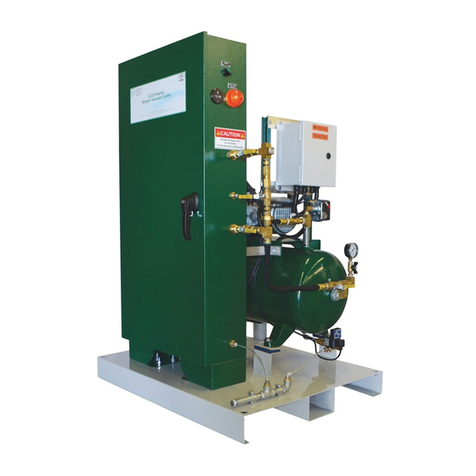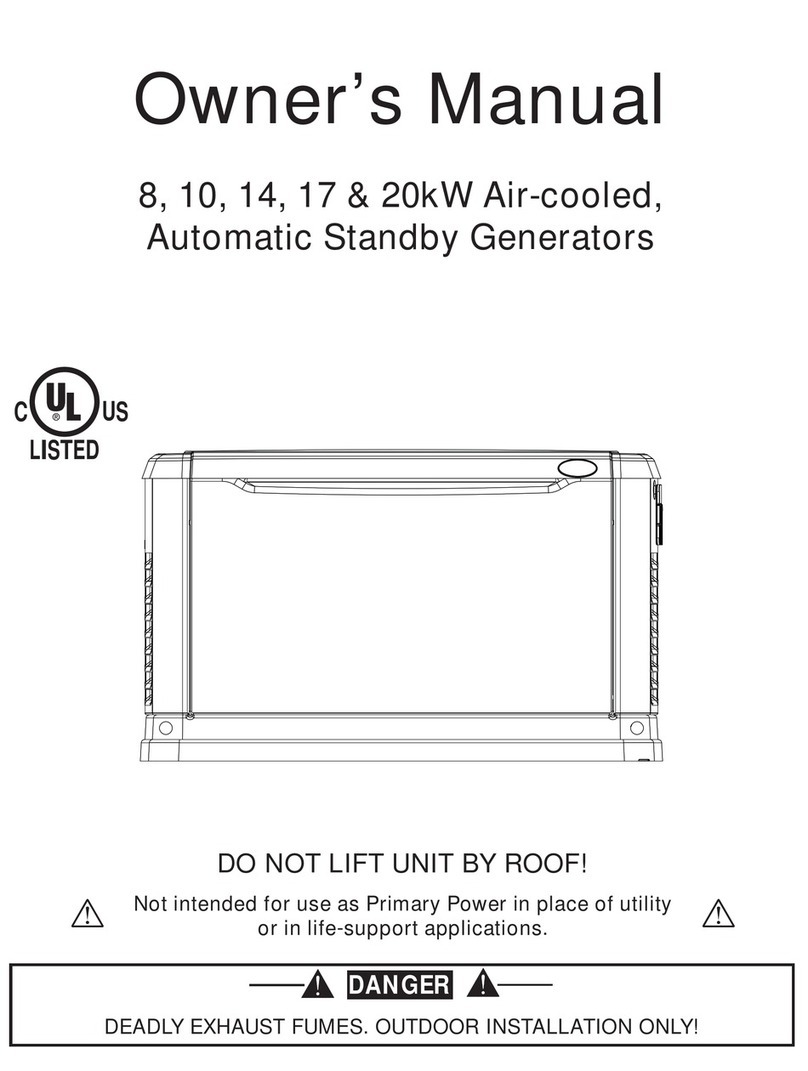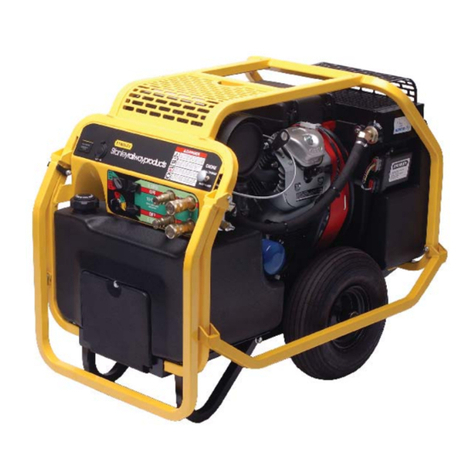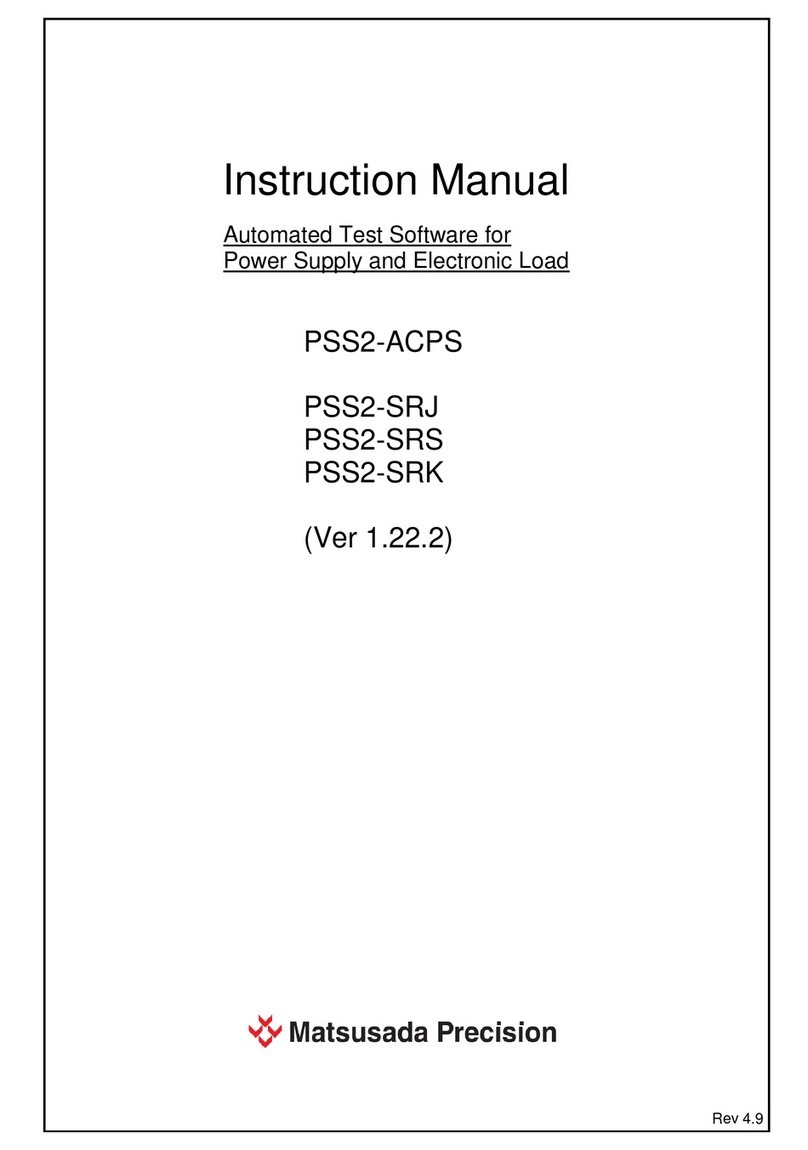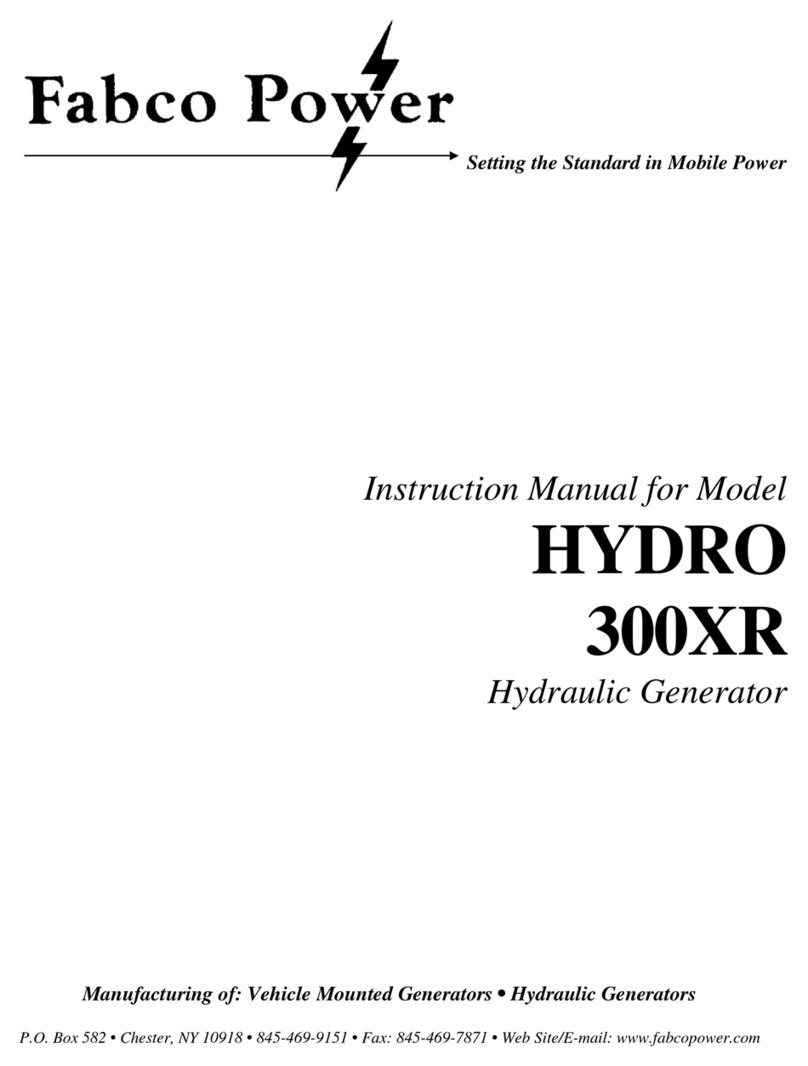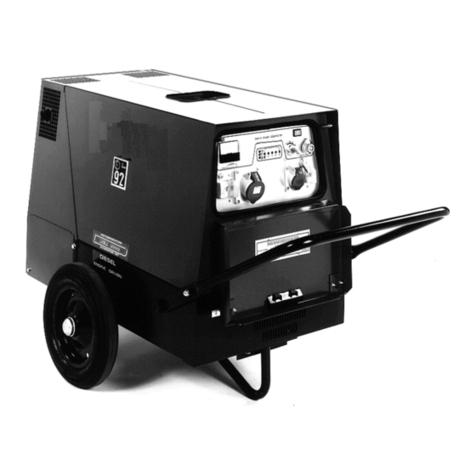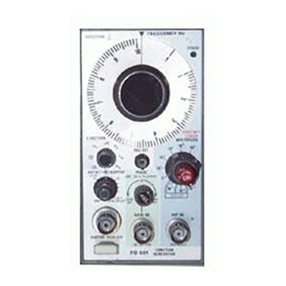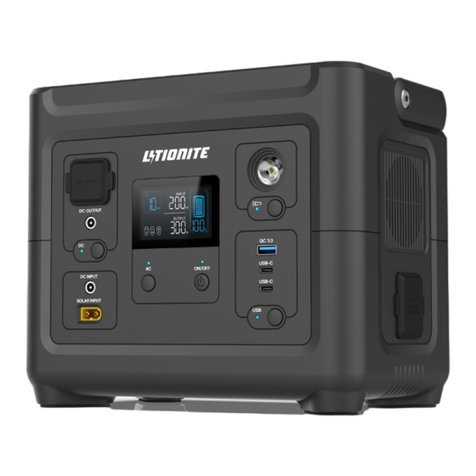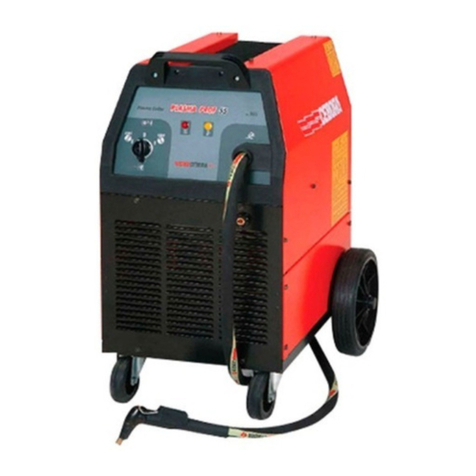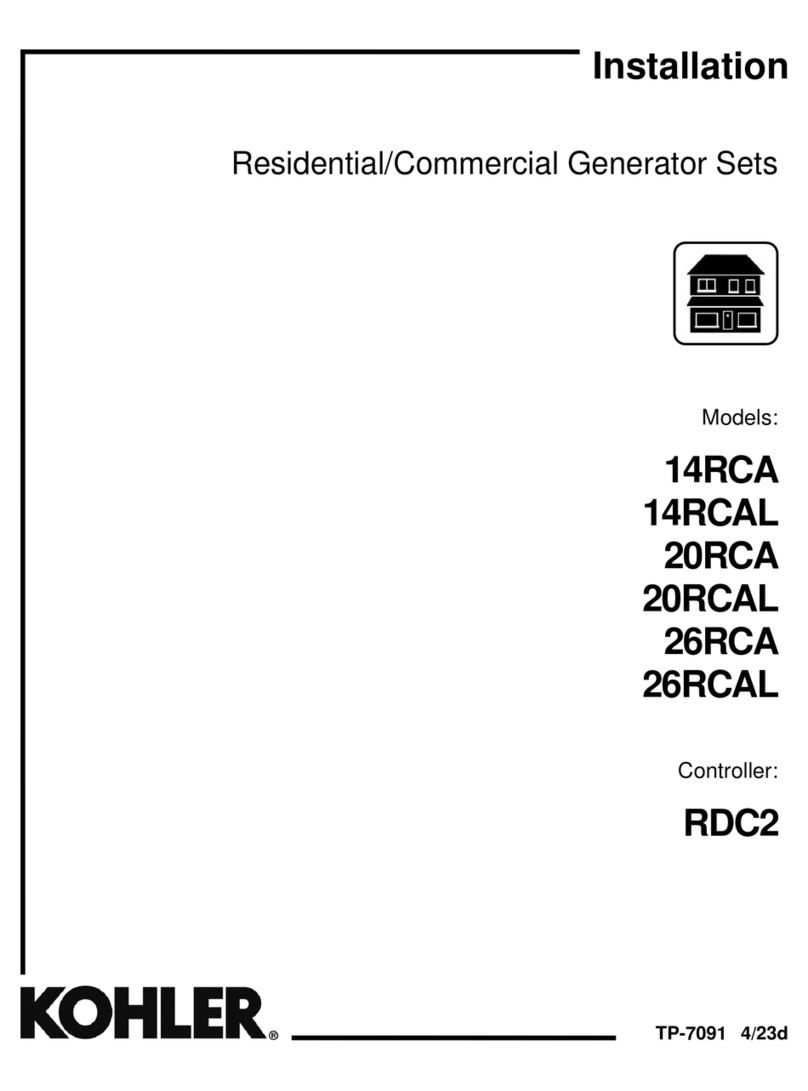ECS AdvancedIQ AG-675 User manual

INSTALLATION &
OPERATIONS MANUAL
Products for use under U.S. Patents 8,720,591, 9,144,700 and 9,186,533
AdvancedIQ
WALL MOUNT
NITROGEN GENERATOR
AG-675/950 (675E/950E) | AG-2000/3500 (2000E/3500E)


1
Table of Contents
1. General ..……………………………………………………………………………………………………………….. 2
a. Copyrights and Safety
b. System and Product Information
c. Technical Specifications
d. Operational Information
2. Start-Up and Operational Procedures ………………....……………………………………………….. 13
a. Installation
b. Start-Up Procedure
c. Normal Operation
d. Fire Sprinkler System Maintenance Procedure
3. Sequence of Operation …………………………………………………………………………………………. 23
4. Auxiliary Equipment ..……………………………………………………………………………………………. 27
a. Oxygen Removal Vent - Standard Vent
b. Oxygen Removal Vent - SMART Vent
c. Monitoring - In-Line Corrosion Detector ILD-X
d. Monitoring - SMART Gas Analyzer
5. Commissioning ……………………………………………………………………………………………………… 41
a. Commissioning Procedure
b. Low Pressure Valves
c. Commissioning Checklist
6. Maintenance …………………………………………………………………………………………………………. 52
a. Routine Checks
b. HMI user interface information
c. Nitrogen Purity and Flow Rate
d. Filter Replacement
e. Vent Maintenance
f. Generator Configuration Diagram
g. Troubleshooting
h. Wiring Diagrams
i. Inspection, Testing and Maintenance Report
7. Miscellaneous ……………………………………………………………………………………………………….. 81
a. Order Form
b. System Summary
c. Warranty Information
M-963
© 2023 Engineered Corrosion Solutions, LLC. All Rights Reserved. ECS LLC Proprietary Information Rev. 1.08

2
General
COPYRIGHTS
Copyright © 2023 Engineered Corrosion Solutions, LLC - All Rights Reserved
Reproduction or use, without express written permission from Engineered Corrosion Solutions, of any
portion of this manual is prohibited. While all reasonable efforts have been taken in the preparation of
this manual to assure its accuracy, Engineered Corrosion Solutions assumes no liability resulting from any
errors or omissions in this manual, or from the use of the information contained herein. Engineered
Corrosion Solutions reserves the right to make changes to this manual and the data sheets herewith at
any time, without prior notification.
SAFETY
Safety Guidelines
The manual contains safety information that is important to know and understand. The information is
provided for the safety of the installers, operators and users of the nitrogen generation systems, as well
as the nitrogen generation equipment.
The Installation and Operations Manual that is supplied with each nitrogen generation system must be
read thoroughly and be completely understood prior to installing and operating nitrogen generation
system. All appropriate safety standards for the handling of gases as determined by local, state or national
laws and regulations are to be followed at all times.
General Safety Information
IMPORTANT: Read all of the safety information in the manual prior to operating the equipment. Use of
the equipment in a manner not specified within the manual could impair the protection
provided by the nitrogen generation system and could result in an unintended release of
pressure which could cause serious injury or damage. Only qualified personnel can perform
commissioning, inspection, testing and maintenance of the nitrogen generation equipment.
When handling, installing, or operating the nitrogen generation equipment, the personnel must employ
safe engineering practices and observe all related local, state and national regulations, health, and safety
procedures, and legal requirements for safety.
Ensure the nitrogen generation equipment is depressurized and electrically isolated, before performing
any maintenance or troubleshooting instructions specified in this manual.
The warnings covered in this manual are the most known potential hazards, but by definition cannot be
all-inclusive. If the user employs an operating procedure, item of equipment, or method of working that
is not specifically recommended by Engineered Corrosion Solutions, the user must ensure that the
equipment will not be damaged or become hazardous to any persons or property.

3
Cautions and Warnings
CAUTION: Do not install the Nitrogen Generator or Air Compressor Package in an area where ammonia,
sulfur dioxide, hydrogen sulfide, mercaptans, chlorides, chlorine, oxides of nitrogen, acid
fumes, solvent vent vapors, and ozone vapors or similar contaminates exist. The equipment
can be damaged by ammonia and other vapors shortening membrane life.
WARNING: Do not operate the Nitrogen Generation System if damaged during shipment, handling or use.
Damage could result in injury or property damage.
WARNING: Operation of the nitrogen membrane above the rated design pressure could be hazardous.
Do not connect the nitrogen generation equipment to compressed air sources that can exceed
the maximum rated pressure without installing pressure controls and safety relief devices in
the compressed air supply line.
WARNING: Specific procedures must be developed for maintenance and servicing of the equipment
where the nitrogen membrane is located. Appropriate labels must be continuously displayed
in all areas where personnel might be exposed to a nitrogen atmosphere under normal and
abnormal conditions.
WARNING: Nitrogen is nontoxic and largely inert. Rapid release of nitrogen gas into an enclosed space
displaces the oxygen and can cause an asphyxiation hazard.
Maintenance and Troubleshooting Warnings
1. Nitrogen Generator includes 120-240VAC 50/60 Hz voltage inside cabinet. Exercise caution and
do not touch any wiring connections when power is applied to the unit.
2. Nitrogen Generator has hot surfaces inside cabinet when nitrogen generator is operating and
after nitrogen generator has turned off. Exercise caution when working on nitrogen generator
while operating and after nitrogen generator has shut off. (Wear Hand Protection, where needed)
Lifting and Troubleshooting Instructions
Nitrogen Generators weigh in excess of 100 lbs (45 kg). When lifting and/or carrying a nitrogen generator
proper lifting a carrying techniques must be considered.
1. Keep a wide base of support. Feet should be shoulder-width apart with one knee slightly in front
of the other.
2. Squat down bending at hips and knees. If needed, one knee on the floor and other knee in front,
bent at a right angle.
3. Keep good posture. Look straight ahead with back straight, chest out, and shoulders back.
4. Slowly lift by straightening your hips and knees (not your back). Keep your back straight, and
don't twist as you lift.
5. Hold the load as close to body as possible.
6. Use feet to change direction. Small steps.
7. Lead with hips as changing direction. Keep shoulders in line with hips as you move.
8. Set load down carefully. Squatting with the knees and hips only.

4
SYSTEM and PRODUCT INFORMATION
Dry Pipe Nitrogen Inerting (DPNI)
Dry Pipe Nitrogen Inerting technology was developed by Engineered Corrosion Solutions (ECS) and is used
to control oxygen corrosion in dry pipe and/or preaction fire sprinkler systems. DPNI is executed by
employing a “fill and purge” differential pressure cycle (breathing) within the sprinkler pipe network. The
“fill and purge” pressure cycle consists of venting the system pressure by 3-5 psi (.2-.3 bar), followed by
replacing the vented pressure back into the system. This breathing processuses a nitrogen rich gas stream,
typically 98% or greater, for a specific length of time (typically 14-days or less), until a nitrogen-rich, or
inert, atmosphere exists within the sprinkler pipe network. By changing the atmosphere inside the pipe
network to 98% or higher nitrogen content, the available oxygen content is reduced to a level that will
not allow appreciable corrosion of the fire sprinkler pipe. With the level of oxygen corrosion reduced to
near zero the effective life of the fire sprinkler system is greatly extended. Systems that implement a DPNI
corrosion control strategy should never develop leaks when maintained properly.
Dry Pipe Nitrogen Inerting Equipment
Nitrogen Generator
The AdvancedIQ Nitrogen Generator is a wall mounted, “plug and play” nitrogen generation system is
designed to facilitate the Dry Pipe Nitrogen Inerting (DPNI) for controlling oxygen corrosion in dry pipe
and preaction fire sprinkler systems. The nitrogen generator can be used in cold storage/freezer to
provide added benefit of ice plug mitigation. The human machine interface (HMI) display screen allows
for easy operation and complete control of the nitrogen generator as well as the ability to communicate
with the nitrogen generator from anywhere in the world. Access to nitrogen generator operation,
maintenance, diagnostics and stored historical data is easily obtained through the HMI screen on the
nitrogen generator or remotely through the internet. The Nitrogen Generator includes an integral oil-less
compressor and a 3-way valve that allows the nitrogen generator to be used for maintenance or “fast fill”
needs to meet the NFPA 13 30-minute fill requirement based on the criteria defined in the Technical
Specifications Section. In applications outside of the defined criteria, a separate air compressor can be
used to meet the NFPA 13 30-minute fill requirement. The Nitrogen Generator facilitates “fill and purge”
breathing in the fire sprinkler system and has been paired with a Standard Vent (PAV-D), SMART Vent
(PSV-D/DE) or AvancedIQ Vent (PAV-DQ) installed on the fire sprinkler riser.
Nitrogen Generator Features
The nitrogen generators with the patented “fill and purge” breathing technology include the following
features:
•Removal of corrosive oxygen from the entire sprinkler system in fourteen (14) days or less
•All equipment is installed in the sprinkler riser room for easier installation and servicing
•No refrigerated dryers or nitrogen storage tanks required
•Interactive LCD touchscreen display
•Bypass alarm indication with sleep mode
•Programmable audible alarm
•Optional remote monitoring and email alerts
•Nitrogen generation system monitoring
•Membrane separation technology with 20-year service life
•Minimal maintenance requirements

5
Oxygen Removal Vent
To completely remove the oxygen in a dry pipe and preaction fire sprinkler system, it is necessary to install
a vent on the main riser of each fire sprinkler system. Vents allow for a system to breathe, which requires
a 3-5 psig (.2-.3 bar) pressure range to facilitate removal of oxygen gas from the system. Supervisory
nitrogen gas is supplied to the system until the air maintenance device reaches the high-end pressure.
The vent slowly releases the gas mixture inside the sprinkler system through the restricted orifice until
the system reaches the low-end pressure at which point supervisory nitrogen is supplied to the system
again. This process is repeated numerous times until the atmosphere inside the piping network reaches
at least 98% nitrogen. The vent is crucial for expedient mixing of the gas and elimination of oxygen inside
the system within the specified timeframe.
ECS offers three (3) DPNI vents, the PSV-D/(DE) SMART Vent, the PAV-D Standard Vent and the PAV-DQ
Vent.
•The PSV-D/(DE) SMART Vent is an automated vent that when activated will automatically vent for
the necessary amount of time to achieve the desired inert inner pipe atmosphere, and
automatically close when the process is completed. This process is initiated by pressing the “Vent”
pushbutton on the vent’s control panel.
•The PAV-D Standard Vent requires an operator to open the vent’s isolation valve when venting is
desired, and after a specified time (typically 14-days or less) when the breathing process is
completed, the isolation valve on the vent must be manually closed.
•The PAV-DQ Vent in conjunction with AdvancedIQ Vent Controller (AVC) is an automated vent
that when activated will open and vent for the necessary amount of time to achieve the desired
inert inner pipe atmosphere, and close automatically when the process is completed.
Oxygen Removal Vent Features
The oxygen removal vents with the ECS patented “fill and purge” breathing technology include the
following features:
•Removal of corrosive oxygen from the entire sprinkler system in fourteen (14) days or less
•All equipment is installed in the sprinkler riser room for easier installation and servicing
•No support hanger required
•Backpressure regulator preventing system depressurization from vent
•In-line filter to protect restricted venting orifice from contamination

6
Recommended Monitoring Equipment
In-Line Corrosion Detectors
The In-Line Corrosion Detector (ILD) is designed to provide an early warning of corrosion activity within
the fire sprinkler system. The ILD features a double wall construction that incorporates a thin milled
section of pipe (.035” (8.9mm)) surrounded by a full thickness piece of pipe to detect and alert to the
presence of corrosion activity. If corrosion occurs the milled section of the ILD will fail prior to the failure
of any other section of the pipe wall. When the milled section fails it allows the system to pressurize the
chamber outside the milled section of pipe which activates the attached pressure switch on the ILD. The
pressure switch can be remotely monitored through a building monitoring system.
The ILD is placed at strategic locations within the fire sprinkler piping network where corrosion has the
highest potential of occurring.
•Wet Systems - Locate the ILD in high point of the sprinkler system, typically at the air/water
interface in a branch line, where air will be trapped as the system is filled with water.
•Dry Systems - Locate the ILD in a horizontal portion of the supply main piping where trapped water
will accumulate.
SMART Gas Analyzer
The SMART Gas Analyzer (SGA-1) provides continuous real-time nitrogen/oxygen concentration levels
within a dry pipe and preaction fire sprinkler system. The analyzer samples discharge gas from an adjacent
Standard Vent (PAV-D/DQ) or SMART Vent (PSV-D/DE). It is equipped with programmable outputs for one
of three different oxygen concentration levels (1%, 3%, and 5%), providing early warning to a user when
the nitrogen concentration within the fire sprinkler system falls below the desired level. The SGA-1 is
equipped with an analog (0-5VDC, 0-10VDC, or 4-20mA) output and an RS-485 port for optional remote
control and monitoring as well as displaying either oxygen or nitrogen concentration.
Handheld Gas Analyzer
The handheld gas analyzer (PHGA-1) allows for quick, convenient reading of nitrogen gas purity levels. The
gas analyzer can be connected to any of the sample ports on the ECS devices such as the nitrogen
generator or the vent. Additional sampling ports can be ordered and placed at any point on the systems
where gas purity monitoring is desired.

7
AdvancedIQ Vent Controller (AVC)
The AdvancedIQ Vent Controller (AVC) provides automatic oxygen venting, monitoring of
nitrogen/oxygen concentration levels and monitoring of the sprinkler system pressure within each
dry/preaction fire sprinkler system. As a fire sprinkler system is filled with a continuous supply of nitrogen
gas from the Nitrogen Generator System, the Vent, installed on the sprinkler system riser, allows oxygen
rich gas to be vented from the fire sprinkler system.
The AVC samples the discharge gas from each Vent connected to the controller. Over a fourteen (14) day
period, the Vent will dilute the oxygen concentration in the entire fire sprinkler system to less than 2%
oxygen. The gas flows out of the restricted orifice on the vent through pressure-rated tubing to provide
slow controlled flow to the AdvancedIQ Controller. Once the desired system gas composition is reached
the controller will automatically close and stop the venting process thereby preventing continuous
venting. The AVC is equipped with a programmable logic controller (PLC) and a human machine interface
(HMI) with an LCD display to control the venting process and continuously monitor the nitrogen purity
levels in the sprinkler systems.
AdvancedIQ Vent Controller Features
The AdvancedIQ Vent Controller in conjunction with the oxygen removal vents, along with the ECS
patented “fill and purge” breathing technology include the following features:
•All equipment is installed in the sprinkler riser room for easier installation and servicing
•Individual pressure & purity monitoring for up to six (6) zones
•Datalogging & historical trends for each zone
•Leak rate checks for each zone
•Internet connectivity and remote monitoring capability
•Removeable datalog (flash drive)
•Form-C dry contact supervisory

8
TECHNICAL SPECIFICATIONS
Dimensions - AG-675/950
24.5"(622mm) W x 36.5"(927mm) H x 9.25"(235mm) D
Dimensions - AG-2000/3500
28.5" (724mm) W x 39.5" (1003mm) H x 11.5" (292mm) D
Weight - AG-675/950
125 lbs (57 Kg)
Weight - AG-2000
208 lbs (94 Kg)
Weight - AG-3500
220 lbs (100 Kg)
Location
Dry Indoor Use
Altitude
Up to 6,560 ft (2,000m)
Temperature Range
40°F - 105°F (5°C - 40°C)
Pollution Degree
2
Nitrogen Generator Cabinet Power Supply - AG-675/950
120VAC/1ph/60Hz (220-240VAC/1 ph/50 Hz)
Nitrogen Generator Cabinet Power Supply - AG-2000/3500
200-240VAC/1 ph/50-60 Hz)
Power Consumption - AG-675
5 Amps
Power Consumption - AG-950
6 Amps
Power Consumption - AG-2000/3500
10 Amps
Overvoltage Category
II
AG-675 - Air Compressor Output
2.5 SCFM/150 SCFH (70.8 L/min)
AG-675 - Nitrogen Gas Output
0.3 SCFM/20 SCFH (9.4 L/min)
AG-675 - Largest Single Zone Capacity @ 40 psig (2.8 bar)
215 gallons (814 L/min)
AG-675 - Largest Single Zone Capacity @ 20 psig (1.4 bar)
540 gallons (2,044 L/min)
AG-675 - Largest Accumulative System Capacity
675 gallons (2,555 L/min)
AG-950 - Air Compressor Output
3.3 SCFM/198 SCFH (93.5 L/min)
AG-950 - Nitrogen Gas Output
0.45 SCFM/27 SCFH (12.7 L/min)
AG-950 - Largest Single Zone Capacity @ 40 psig (2.8 bar)
265 gallons (1,003 L/min)
AG-950 - Largest Single Zone Capacity @ 20 psig (1.4 bar)
590 gallons (2,233 L/min)
AG-950 - Largest Accumulative System Capacity
950 gallons (3,596 L/min)
AG-2000 - Air Compressor Output
9.6 SCFM/576 SCFH (271.8 L/min)
AG-2000 - Nitrogen Gas Output
.66 SCFM/40 SCFH (18.9 L/min)
AG-2000 - Largest Single Zone Capacity @ 40 psig (2.8 bar)
800 gallons (3,028 Liters)
AG-2000 - Largest Single Zone Capacity @ 20 psig (1.4 bar)
1,800 gallons (6,815 Liters)
AG-2000 - Largest Accumulative System Capacity
2,000 gallons (7,571 Liters)
AG-3500 - Air Compressor Output
9.6 SCFM/576 SCFH (271.8 L/min)
AG-3500 - Nitrogen Gas Output
1.5 SCFM/90 SCFH (42.5 L/min)
AG-3500 - Largest Single Zone Capacity @ 40 psig (2.8 bar)
800 gallons (3,028 Liters)
AG-3500 - Largest Single Zone Capacity @ 20 psig (1.4 bar)
1,800 gallons (6,815 Liters)
AG-3500 - Largest Accumulative System Capacity
3,500 gallons (13,249 Liters)
Nitrogen/Air Bypass Output Connection
½" NPT Female
Drain Connection
¼" NPT Female
Filter Replacement Part Number
FKWM-FS

9
Nitrogen Quality
N2Purity at Discharge: 98% (maximum of 2.0% oxygen)
N2Pressure at Discharge: Min: 15 psig (1 bar); Max: feed air pressure minus 15 psig (1 bar)
N2Water Dew Point: Less than -70°F (-57°C)
NITROGEN GENERATOR APPROVALS
FM Approved - Standard 1035
UL Listed - 508A Industrial Control Panel
UL 508A Listed to Canadian Standards
CE Certification
AG-675 and AG-950 Dimensions
AG-2000 and AG-3500 Dimensions
9.25”
(235mm)
36.5”
(927mm)
24.5” (622mm)
39.5”
(1003mm)
28.5” (724mm)
11.5”
(292mm)

10
OPERATIONAL INFORMATION
System Operating Pressures
When multiple dry pipe and preaction fire sprinkler systems are connected to one nitrogen generator, the
fire sprinkler systems must operate at the same supervisory gas pressure.
In applications where multiple dry pipe and preaction fire sprinkler systems are connected to one (1)
nitrogen generator and there is more than one (1) supervisory gas pressure an ECS Nitrogen Interface
Controller (NIC-1) must be included in the project.
System Operating Pressure Adjustments
The nitrogen generator operating pressure settings in conjunction with the pressure setting of the fire
sprinkler system’s air maintenance device(s) are established and set during the commissioning process.
•The operating pressure settings of the fire sprinkler air maintenance device(s) or the nitrogen
generator must not be readjusted after the system has been commissioned.
•Any adjustments to the operating pressure settings of the fire sprinkler air maintenance device(s)
or the nitrogen generator will have an adverse effect on the nitrogen inerting process and could
damage the nitrogen generation equipment.
•Any changes to the fire sprinkler air maintenance device(s) or nitrogen generator operating
pressure settings must be authorized by and performed under the direction of ECS.
Sprinkler System Gauge Accuracy
The accuracy of the gauges used in fire sprinkler systems can affect the operating pressure of the fire
sprinkler system as well as determining the required 3-5 psig (.2-.3 bar) pressure range needed to properly
remove the oxygen from a fire sprinkler system. NFPA 25 indicates that gauges in excess of ±3% must be
replaced or recalibrated. FM Global allows the gauges used in fire sprinkler systems to be accurate within
±2% over the center third of its scale and ±3% over the remaining two-thirds of its scale. This can become
paramount when operating a low-pressure valve sprinkler system with an operating pressure of
15-20 psig (1-1.4 bar).
Example: NFPA 25 - A 200 psi (14 bar) gauge with ±3% accuracy equates to ±6 psi (.4 bar) variance in the
actual pressure reading of the gauge. Therefore, a sprinkler system indicating a 40 psig (2.8 bar)
operating pressure can actually be operating between 34 psig (2.3 bar) and 46 psig (3.2 bar).
FM Global - A 200 psi (14 bar) gauge with ±2% accuracy in the center third of the gauge equates
to ±4 psi (.3 bar) variance in the actual pressure reading of the gauge; and ±3% accuracy in the
upper and lower third of the gauge equates to ±6 psi (.4 bar) variance in the actual pressure
reading of the gauge.
•A 200 psi (14 bar) gauge on a sprinkler system indicating a 100 psig (6.9 bar) (center
third of the gauge) operating pressure can actually be operating between 96 psig
(6.6 bar) and 104 psig (7.2 bar).
•A 200 psi (14 bar) gauge on a sprinkler system indicating a 20 psig (1.4 bar) (lower third
of the gauge) operating pressure can actually be operating between 14 psig (.9 bar) and
26 psig (1.8 bar).
A sprinkler system using a low-pressure valve with a 200 psi (14 bar) gauge indicating a 15 psig (1 bar)
operating pressure can actually be operating between 9 psig (.6 bar) and 21 psig (1.4 bar); which could be
close to the low-air alarm/trip pressure of the sprinkler system.

11
To ensure proper operation of the sprinkler system and the nitrogen generator, calibrate the sprinkler
system operating pressure to the turn-on and turn-off pressure of the nitrogen generator using the Air
Maintenance Device (AMD) Pressure Adjustment Procedure in the Maintenance Section of this manual.
The procedure aligns the sprinkler system operating pressure to the turn-on pressure of the nitrogen
generator; reducing the potential of the nitrogen generator turn-on pressure to be set near the low-air
alarm/trip pressure of the sprinkler system.
Sprinkler System Air Maintenance Device
Dry pipe and preaction fire sprinkler systems are to be configured to use a single air maintenance device
(AMD) for each dry pipe or preaction fire sprinkler system in accordance with NFPA 13.
•Applications where multiple fire sprinkler systems are served with a single AMD has been known
to cause nitrogen generators to short cycle due to the air restriction that the AMD imposes on the
nitrogen supply line. Short cycling of the nitrogen generator can cause damage to the system
components and may affect the manufacturer’s warranty.
AMD operation is directly affected by the inlet pressure to the AMD. To ensure the AMD operates properly
with the nitrogen generator, use the Air Maintenance Device (AMD) Pressure Adjustment Procedure in
the Maintenance Section of this manual.
Fire Sprinkler System Leak Rates
The leak rate of a dry pipe or preaction fire sprinkler system will have a direct effect on the nitrogen
generator run frequency or on/off cycles. The maximum allowable leak rate in a fire sprinkler system as
defined by NFPA 13 is 1.5 psig (.1 bar) within a 24-hour period. The design specifications of ECS nitrogen
generator is based on 6.0 psig (.4 bar) leak rate within a 24-hour period. Sprinkler systems with a leak rate
in excess of 6.0 psig (.4 bar) within a 24-hour period will cause the nitrogen generator run frequency to
increase resulting in a greater wear on system components and a potential reduction in the service life of
the nitrogen generator. Sprinkler systems with a leak rate greater than 6.0 psig (.4 bar) in 24-hours need
to be repaired to ensure the anticipated service life of the nitrogen generator is met.
NOTES: The run frequency of the nitrogen generator in this chart is based on nitrogen generator
operation outside of the 14-day nitrogen inerting process with the vent closed.
Excessive cycle count could indicate an air compressor/nitrogen generator short cycling issue. Contact
ECS immediately.

12
Sprinkler Leak Rate to ECS Nitrogen Generator Run Cycle Comparison
Leak Rate
psig (bar)/24 Hr
Generator Cycle Time
Time between cycles
Hrs.
Cycles
per
Day
Cycles
per
Week
Leak Rate
psig (bar)/24 Hr
Generator Cycle Time
Time between cycles
Hrs.
Cycles
per
Day
Cycles
per
Week
1.5 (.10) *
80
< 1
3
15.0 (1.0)
8
3
21
2.0 (.14)
60
< 1
3
15.5 (1.1)
7.7
4
22
2.5 (.17)
48
< 1
4
16.0 (1.1)
7.5
4
23
3.0 (.20)
40
< 1
5
16.5 (1.2)
7.3
4
23
3.5 (.24)
34.3
< 1
5
17.0 (1.2)
7.1
4
24
4.0 (.28)
30
< 1
6
17.5 (1.2)
6.9
4
25
4.5 (.31)
26.7
< 1
7
18.0 (1.2)
6.7
4
25
5.0 (.35)
24
1
7
18.5 (1.3)
6.6
4
26
5.5 (.38)
21.8
2
8
19.0 (1.3)
6.3
4
27
6.0 (.41) ***
20
2
9
19.5 (1.3)
6.2
4
27
6.5 (.45)
18.5
2
9
20 (1.4)
6
4
28
7.0 (.48)
17.1
2
10
21 (1.4)
5.7
5
30
7.5 (.52)
16
2
11
22 (1.5)
5.5
5
31
8.0 (.55)
15
2
12
23 (1.6)
5.2
5
33
8.5 (.59)
14.1
2
12
24 (1.7)
5
5
34
9.0 (.62)
13.3
2
13
25 (1.7)
4.8
5
35
9.5 (.66)
12.6
2
14
26 (1.8)
4.6
6
37
10.0 (.69)
12
2
14
27 (1.9)
4.5
6
38
10.5 (.72)
11.4
3
15
28 (1.9)
4.3
6
39
11.0 (.76)
10.9
3
16
29 (2.0)
4.2
6
40
11.5 (.79)
10.4
3
17
30 (2.1)
4
6
42
12.0 (.83)
10
3
17
31 (2.1)
3.9
7
43
12.5 (.86)
9.6
3
18
32 (2.2)
3.8
7
45
13.0 (.90)
9.2
3
19
33 (2.3)
3.7
7
46
13.5 (.93)
8.9
3
19
34 (2.3)
3.6
7
47
14.0 (.97)
8.6
3
20
35 (2.4)
3.5
7
48
14.5 (1.0)
8.3
3
21
36 (2.5) **
3.4
8
50
*NFPA-13 Allowable leak rate.
** NFPA-25 Allowable leak rate.
*** Allowable leak rate for ECS Nitrogen Generators. Higher leak rates may reduce the service life of
the nitrogen generator.

13
Start-Up and Operational Procedures
INSTALLATION
Installation Instructions
Installation of the ECS AdvancedIQ Nitrogen Generator requires six (6) steps:
1. Mount the cabinet in the appropriate location.
NOTE: Nitrogen Generator cabinet includes an integral compressor that may cause vibration
induced noise carryover to adjacent areas.
2. Connect the dedicated power supply to the cabinet.
3. Plumb the nitrogen/air supply line to the dry pipe and/or preaction sprinkler risers being served.
4. Plumb the condensate drain line to floor drain or building exterior.
5. Connect the nitrogen generator to the internet via ethernet cable connection, where applicable.
6. Connect nitrogen generator output signals to BMS or fire alarm system, where applicable.
Wire Gauge Chart
1. Ensure an appropriately rated disconnect switch and circuit breaker (minimum 15 Amps and a
Short Circuit Current Rating (SCCR) of 5 kVA) are installed in a suitable and accessible location in
accordance with the applicable national and/or local codes (i.e. NFPA 70).
2. The circuit breaker and disconnect are to be easily identifiable as associated with the equipment.
3. Ensure the ground wire is properly connected to the ground terminal(s) of the equipment using
appropriately sized ground wire.
Wire Gauge Chart
Size
Amperage
Diameter
Resistance
(AWG)
60° C (140° F)
75° C (167° F)
90° C (194° F)
(Inches)
(mm)
(Ohms / 1,000 ft)
(Ohms / km)
18
.0403
1.024
6.385
20.95
16
.0508
1.291
4.016
13.17
14
15
15
15
.0641
1.628
2.525
8.282
12
20
20
20
.0808
2.053
1.588
5.211
10
30
30
30
.1019
2.588
.9989
3.277
8
36
43
48
.1285
3.264
.6282
2.061
Step 1: Mounting the nitrogen generator cabinet
The Nitrogen Generator is designed to be mounted directly to the wall at the appropriate location. The
Nitrogen Generator can be mounted to the floor using the floor mount leg accessory kit. Several factors
should be considered in choosing the proper mounting location for the nitrogen generator:
•Noise and Vibration concerns in adjacent areas
•Access to required power supply (dedicated circuit)
•Access to building monitoring connections and internet connection (where applicable)
•Access to sprinkler risers being supplied from nitrogen generator
•Access to drain for the condensate discharge line
•Clearance in front of the unit to open the cabinet door and for servicing the equipment
•Cleanliness of the environment and air intake

14
CAUTION: Nitrogen generator cabinet includes ventilation vents in the bottom and side. Ensure that all
ventilation vents are not blocked to allow proper ventilation throughout the nitrogen
generator cabinet.
The cabinet includes a wall mounting bracket with pre-punched holes using standard anchors.
Figure 1a
NOTE: Ensure the wall is structurally sound and the cabinet is firmly anchored to a wall to support the
generator cabinet. When mounted on stud wall the support system should be secured directly to
and supported by a minimum of two (2) studs.
The cabinet includes anchoring holes in the lower left and lower right corners of the cabinet using
standard anchors (See Figure 1b).
NOTE: ECS recommends that the nitrogen generator be anchored to the wall using the wall mounting
bracket and the anchoring holes in the nitrogen generator cabinet.
Figure 1b
Step 2: Power Supply
The Nitrogen Generator requires a dedicated power supply to prevent interaction with other equipment.
The incoming power supply line is connected to the terminal block inside the nitrogen generator cabinet.
The terminal connections are labeled L1, N, and G.
Required nitrogen generator power supply:
•AG-675/950 - 120VAC/1 phase/60Hz (200-240VAC/1 phase/50Hz) dedicated circuit.
•AG-2000/3500 - 200-240VAC/1 phase/50-60Hz dedicated circuit.
9/32” (6.75mm)
Diameter
Rear Wall
Bracket
Nitrogen Generator
Cabinet
8”(203mm)
8”(203mm)
4.00” (102mm)
22.25”(565mm) –AG-675/950
26.25”(667mm) –AG-2000/3500
¾”x1¼”
(19mm x 31.8mm)

15
AG-675/950 Standard
AG-675E/950E Version
AG-2000/3500 Standard
AG-2000E/3500E Version
NOTE: Ensure an appropriately rated disconnect switch and circuit breaker (minimum 15 Amps and a
Short Circuit Current Rating (SCCR) of 5 kVA) are installed in a suitable and accessible location in
accordance with the Applicable national and/or local codes (i.e. NFPA 70).
200-240VAC 1 Phase 50 Hz Connections
5/6 Amps
G
L1
N
120VAC/1 Phase 60 Hz Connections
5/6 Amps
G
L1
N
200-240VAC 1 Phase 50 Hz Connections
10 Amps
G
L1
N
N
200-240 VAC/1 Phase 60 Hz Connections
10 Amps
G
L1
L2
120 VAC
120 VAC

16
Step 3a: Plumb the Nitrogen/Air Supply Line –No Additional Air Compressor (Figure 3a)
The nitrogen/air discharge plumbing from the Nitrogen Generator must be connected directly to the dry
pipe or preaction valve trim using a minimum ½” black steel, galvanized steel, or copper lines. The size of
the nitrogen/air supply line must be based on both the length of pipe between the nitrogen generator
and fire sprinkler systems and the total volume of fire sprinkler systems being supplied.
NOTES: The Nitrogen Generator requires an in-line Air Maintenance Device (AMD) that is equipped with
an on-board field adjustable pressure regulator for each sprinkler system being served.
Acceptable AMD models are the Reliable Model A, Tyco Model AMD-1 and Victaulic Series 757.
When AG-675 or AG-950 nitrogen generator is connected to a single dry pipe or preaction system,
the nitrogen generator can be installed without an AMD. ECS recommends a ball valve and a check
valve be installed in the nitrogen/air supply line.
Figure 3a
Step 3b: Plumb the Nitrogen/Air Supply Line –With Separate Air Compressor (Figure 3b)
A separate air compressor can be used to meet the NFPA 13 30-minute fill requirement or as a back up to
the nitrogen generator. In this application, the nitrogen/air discharge plumbing from the Nitrogen
Generator and the separate air compressor are connected to the dry pipe or preaction valve trim with
isolation valves in each supply line using a minimum ½” black steel, galvanized steel, or copper lines. The
size of the nitrogen/air supply line must be based on both the length of pipe between the nitrogen
generator and fire sprinkler systems and the total volume of fire sprinkler systems being supplied.
NOTES: The Nitrogen Generator requires an in-line Air Maintenance Device (AMD) that is equipped with
an on-board field adjustable pressure regulator for each sprinkler system being served.
Acceptable AMD models are the Reliable Model A, Tyco Model AMD-1 and Victaulic Series 757.
When AG-675 or AG-950 nitrogen generator is connected to a single dry pipe or preaction system,
the nitrogen generator can be installed without an AMD. ECS recommends a ball valve and a check
valve be installed in the nitrogen/air supply line.
Figure 3b
Isolation Ball Valve
Nitrogen Generator
Nitrogen Supply Line
Air/Nitrogen Supply Line
Dry Pipe/Pre-Action System
Control Valve
Air Supply Line
Air Compressor
Isolation Ball Valve
Air/Nitrogen Supply Line
Dry Pipe/Pre-Action System
Control Valve
Nitrogen Generator

17
Step 3c: Plumb the Nitrogen/Air Supply Line –With House/Plant Air Supply (Figure 3c)
A separate house/plant air supply can be used to meet the NFPA 13 30-minute fill requirement or as a
back up to the nitrogen generator. In this application, the nitrogen/air discharge plumbing from the
Nitrogen Generator and the separate hose/plant air supply are connected to the dry pipe or preaction
valve trim with isolation valves in each supply line using a minimum ½” black steel, galvanized steel, or
copper lines. The size of the nitrogen/air supply line must be based on both the length of pipe between
the nitrogen generator and fire sprinkler systems and the total volume of fire sprinkler systems being
supplied.
NOTES: The Nitrogen Generator requires an in-line Air Maintenance Device (AMD) that is equipped with
an on-board field adjustable pressure regulator for each sprinkler system being served.
Acceptable AMD models are the Reliable Model A, Tyco Model AMD-1 and Victaulic Series 757.
When AG-675 or AG-950 nitrogen generator is connected to a single dry pipe or preaction system,
the nitrogen generator can be installed without an AMD. ECS recommends a ball valve and a check
valve be installed in the nitrogen/air supply line.
Figure 3c
Approved Air Maintenance Device (AMD)
Reliable Tyco Victaulic ECS
Model A Model AMD-1 Series 757 AG-675/950
Step 4: Plumb the Condensate Drain Line
The Nitrogen Generator will occasionally discharge a small amount of condensate water from the
coalescing filters inside the cabinet. It is recommended that the ¼” drain connection be plumbed to a floor
drain or building exterior. When plumbing to a drain is not feasible an evaporative collection chamber can
be used.
Nitrogen Generator
Isolation Ball Valve
Nitrogen Supply Line
Air/Nitrogen Supply Line
Dry Pipe/Pre-Action System
Control Valve
House/Plant Air Supply
Isolation Ball Valve
Air Supply Line

18
Step 5: Internet Connection, where used
The nitrogen generator cabinet has ethernet cable connection to connect the nitrogen generator to the
internet through a local area network (LAN). Connect the ethernet cable from the LAN to the ethernet
connector in the nitrogen generator.
Step 6: System Signals and Monitoring, where used
The nitrogen generator cabinet has two (2) system signals and four (4) outputs that can be monitored by
the facility’s BMS or fire alarm system.
Two (2) system signals:
•Bypass Alarm - The nitrogen generator operating in the bypass mode which is activated when
the bypass valve is in the “fast fill” position to fill the fire sprinkler system and the air supplied
directly from the air compressor has reached a pressure of 20 psig (1.4 bar).
oIndication on HMI Display
•Common Audible Trouble - The nitrogen generator is equipped with a common trouble audible
signal which is programmable to activated upon a predetermined trouble.
oAudible signal
oContact ECS for specific procedures to reconfigure common trouble signal
Four (4) system output signals for monitoring through a building monitoring system, if desired:
•Nitrogen Generator Running Mode - Form-C Contacts (Energized When Running, LED On)
•Bypass Mode Alarm - Form-C Contacts (Normally De-Energized, LED Off)
•Nitrogen Generator Loss of Power - Form-C Contacts (Normally Energized, LED On)
•Common Trouble - Form-C Contacts (Normally De-Energized, LED Off)
oShort Cycling - Runs more than ten (10) times per hour
oExcessive Runtime - Continuous running for more than four (4) hours
oLow Supply Line Pressure
oBypass Mode - In Bypass for more than one (1) hour
oFilters Need Replacement
AG-675/950 Series
Monitoring Relay Contact Rating
250 VAC/ 6 Amps
By-Pass Alarm Monitoring Output
(Normally De-Energized)
Nitrogen Generator Power Monitoring Output
(Normally Energized)
Common Trouble Output
(Normally De-Energized)
Nitrogen Generator Running Output
(Energized When Running)
Ethernet Connection
This manual suits for next models
7
Table of contents
Other ECS Portable Generator manuals
Popular Portable Generator manuals by other brands
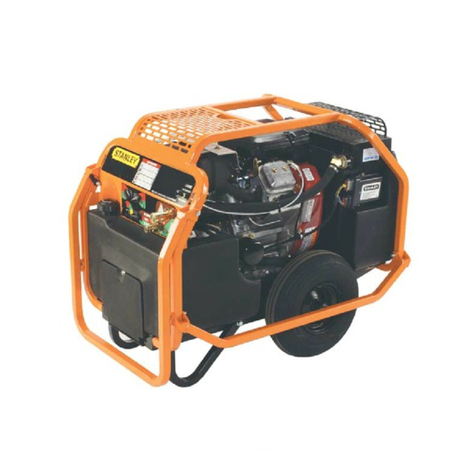
Stanley
Stanley GT18B01 Service manual

ETQ
ETQ TG72K12 owner's manual
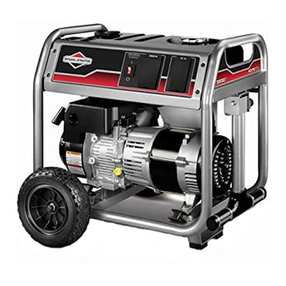
Briggs & Stratton
Briggs & Stratton Portable Generator Operator's manual

Husky
Husky HU40500 Series Operator's manual
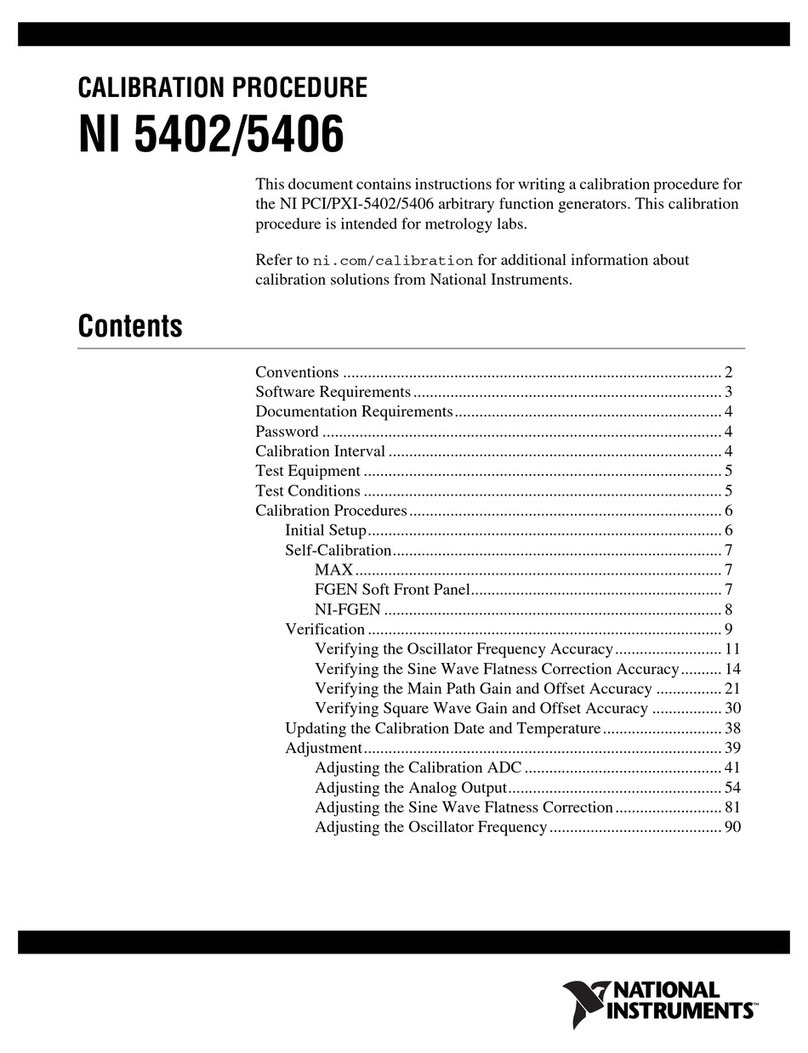
National Instruments
National Instruments NI 5402 CALIBRATION PROCEDURE
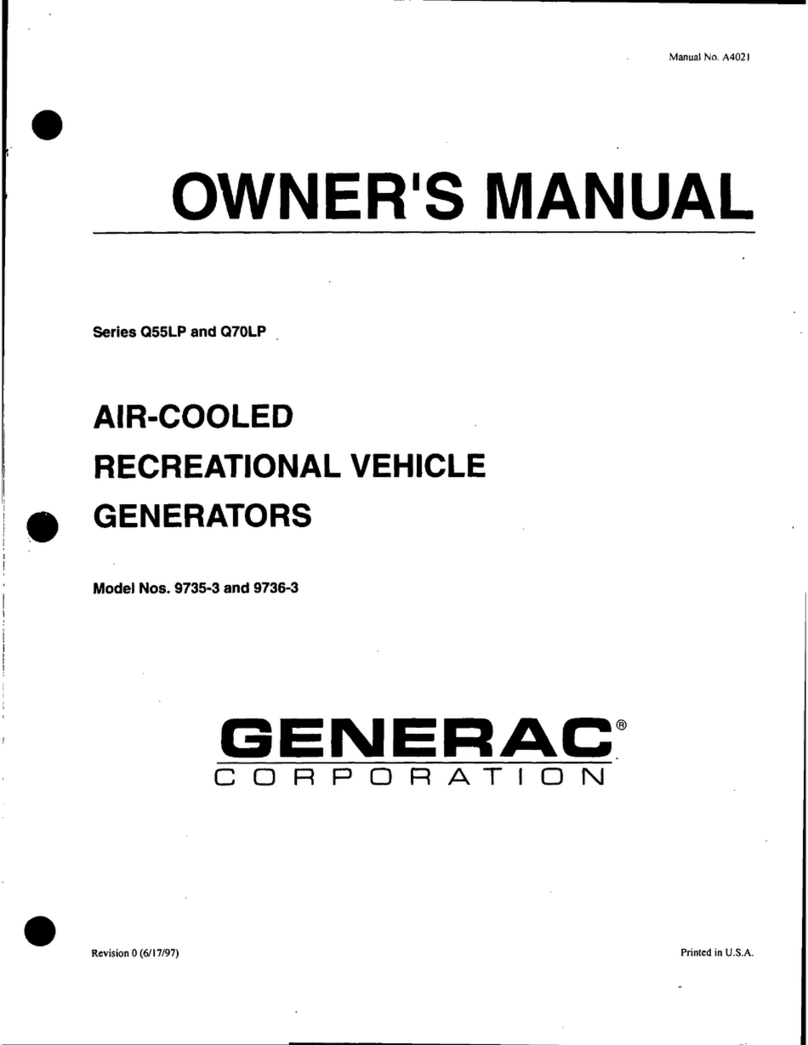
Generac Power Systems
Generac Power Systems A4021 owner's manual
